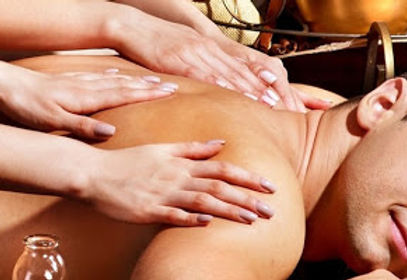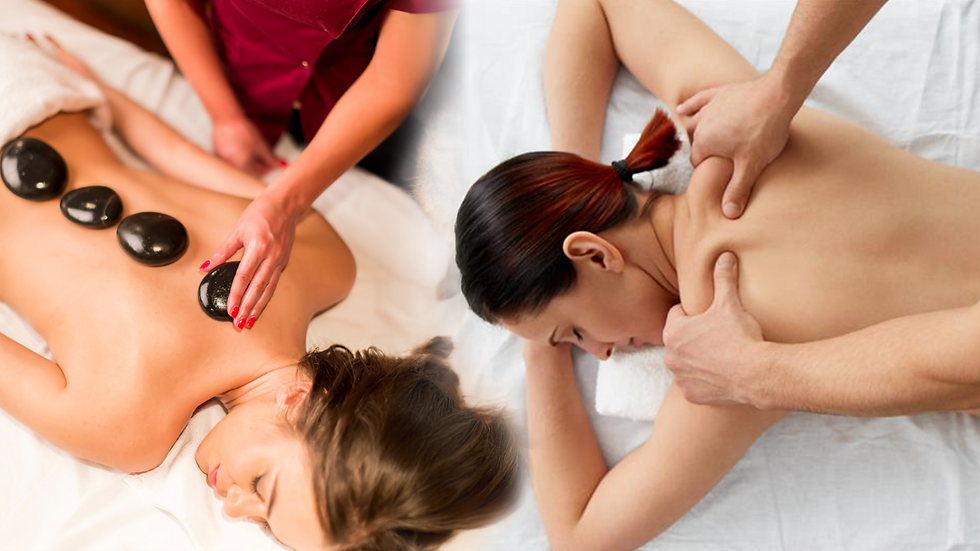

In the bustle of New York City, a four hands massage offers a doorway to instant calm. Two therapists move in tandem, creating a single, flowing rhythm that can feel more expansive than a standard session. If you’re curious about what this experience entails and how to get the most from it, you’re in the right place.
What is a four hands massage?
A four hands massage is exactly what the name promises: two trained therapists working side by side to treat your body with synchronized movements. The strokes are deliberate and coordinated, designed to cover more surface area without losing the sense of flow. The result is a sense of spaciousness in the body and a deeper sense of relaxation than a typical massage might provide.
The technique is usually a careful blend of Swedish-style effleurage and deeper, targeted work, often with parallel or mirrored patterns. In Manhattan, some studios tailor the tempo to your breath, so you feel a natural lift rather than a marching tempo that jars the senses. It’s also common for clients to hear onboarding questions about pressure, areas to avoid, and focus zones before the session begins.
In certain neighborhoods, you’ll see the phrase four hands massage ny manhattan used in marketing materials, signaling a signature service that aims to feel like a single, cohesive journey. Even with two therapists, the goal remains simple: to leave you lighter, less tense, and more present in your body.
How it works in practice
When you arrive, you’ll typically be escorted to a quiet room with two massage tables or a single, generously sized space designed for two practitioners. The therapists coordinate their approach from the first touch, ensuring their strokes complement rather than duplicate one another. You’ll notice a distinctive pairing of pressure and tempo that travels along your back, legs, and arms in a shared cadence.
Sessions often begin with a gentle, full-body checking-in—pressure levels, areas of stiffness, and any injuries or sensitivities. The therapists adjust in real time, shifting intensity as needed. Because two hands are moving at once, you’ll sometimes experience longer, sweeping strokes that feel like a single, extended massage across your entire frame.
In many studios, the two therapists maintain professional boundaries and communicate discreetly with you about comfort and preference. If you have a sore shoulder or a tight hip, you can request more attention in that area, and the team will tailor the sequence to address it without breaking the seamless flow.
Benefits for body and mind
The most immediate benefit is deep relaxation. The synchronized movements can slow the nervous system more effectively than a solitary massage, inviting the body into a restorative state. Reduced muscle tension often follows, especially along the neck, shoulders, and lower back, where stress tends to accumulate.
Beyond relaxation, the circulatory and lymphatic systems often respond well to the broader communication between two therapists. You may notice improved range of motion and a noticeable reduction in knots because the therapists can address multiple problem areas in one pass. For busy Manhattanites juggling work and city life, that sense of extended relief can feel remarkably efficient.
There’s also a mental benefit: the experience tends to induce a meditative, almost cinematic stillness. With two therapists guiding you through breath and pressure, many clients report a clearer mental state and better sleep in the days after the session.
What to expect in a Manhattan spa
Ambience matters. In many Manhattan spaces, the rooms are softly lit, scented, and designed to quiet the senses. Sessions commonly run 60, 90, or 120 minutes, with the extended options allowing for a more gradual build and release. You’ll have two practitioners working in harmony, their movements coordinated to maintain a steady tempo throughout the treatment.
When you’re planning a visit, consider the layout—some studios use two separate tables for more space, while others opt for a single, wider setup to enhance the sense of unity between the therapists. Draping remains important, and proper modesty is respected with professional, motion-appropriate coverage. If you’re new to the format, don’t hesitate to ask questions about the sequence or how pressure will be distributed.
| Aspect | Single therapist massage | Four hands massage |
|---|---|---|
| Therapists | 1 | 2 |
| Coverage | Localized to areas chosen | Broader, synchronized attention |
| Tempo | Varies by therapist | Often more uniform, flowing |
| Duration | 60–120 minutes common | 60–120 minutes common, sometimes longer |
In addition to the room setup, studios may offer add-ons like aromatherapy or scalp work to complement the two-therapy approach. If you have a preference—more focus on the back, or a slower pace toward the end—communicate it at the start. The best studios treat your comfort as the compass guiding the entire experience.
How to choose a studio in NYC
Look for licensed therapists and a clean, well-run facility. Reviews can reveal how consistently studios deliver on the promise of synchronized, two-therapist work. It’s wise to verify that both practitioners are trained in a coordinated technique and that you’ll have a clear point of contact before your appointment.
Neighborhood and timing matter, too. Manhattan offers everything from luxury spa sanctuaries to wellness studios with more casual vibes. If you’re new to four hands massage, try a studio that offers a gentle introduction or a shorter session so you can gauge your comfort level. Ask about the therapists’ backgrounds and whether you can tailor the routine to your goals—whether it’s deep tissue relief or pure relaxation.
Etiquette and preparation
Arrive a few minutes early to settle in and discuss your preferences. Clear communication about pressure, areas to avoid, and breathing cues helps the session unfold smoothly. During the massage, stay as relaxed as possible—breathe through any tension and let the rhythm carry you.
Afterward, take a few minutes to hydrate and reflect on what worked well. Hydration supports muscle recovery, and light stretching can help extend the relief you felt on the table. If you loved the experience, consider booking a follow-up session with a focus on different areas or pressure levels to keep the momentum going.
Variations and add-ons
Four hands sessions can be paired with other modalities such as hot stones, aromatherapy, or lymphatic drainage. The two therapists can coordinate to deliver a broader range of sensations—warming, cooling, and circulatory effects—within a single treatment. Add-ons can elevate the experience, especially if you’re seeking a more targeted outcome.
Some studios offer scalp or foot work as a complementary finisher, while others emphasize rhythmic breathing and quiet reflection. If you’re celebrating a special occasion or simply need a reset, these options can turn a standard session into a memorable event. The key is to communicate your goals so the therapists tailor appropriately.
Pricing and duration
Pricing varies by neighborhood, studio prestige, and the experience level of the therapists. Expect standard durations of 60, 90, or 120 minutes, with four hands sessions often priced comparably to other high-end treatments. Some places include gratuity as a separate line item, while others factor it into the base price.
First-time visitors might start with a 60-minute option to test the fit. If you’re returning or looking for deeper release, a 90-minute session is a popular choice. When budgeting, consider transportation time, spa amenities, and possible package deals that offer a discount for multiple visits.
Aftercare and tips
Hydration is a simple but powerful ally after a massage. Water helps flush out metabolic byproducts released during the session and supports recovery. A light meal or snack afterward can help stabilize energy, especially if pressure was intense or you finished late in the day.
Avoid intense workouts immediately after, and give yourself time to ease back into daily activity. Gentle stretching and a warm bath can extend the sense of ease. If you enjoyed the experience, note what you liked and consider discussing future goals with the studio—different pressure levels, areas of focus, or a preferred pairing of therapists for consistency.
For many, the first four hands massage in Manhattan is more than a moment of relaxation—it’s a catalyst for renewed balance in a city that never stops. When you find a studio that emphasizes comfort, consent, and expert coordination, you’ll recognize the difference in how your body feels, breath steadies, and sleep deepens. In a world that moves fast, this shared practice of care offers a rare pause you can carry with you into the week.